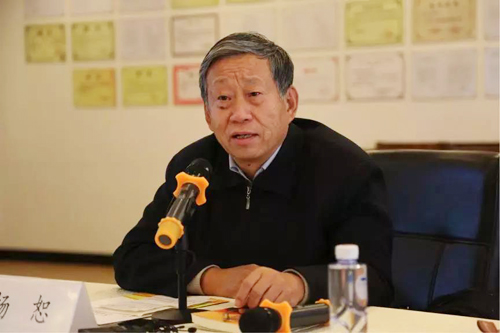Belt and Road
Your Present Location: PROGRAMS> Belt and RoadYang Shu: Why five years is only a start for BRI
Source: CGTN Published: 2018-11-26
"I will not have a lengthy report on what we have achieved as I believe you have heard enough. Instead, I would like to bring to light some of the problems we are currently facing" - Yang Shu, director of the Institute for Central Asian Studies at China's Lanzhou University, started his public lecture on China's Belt and Road Initiative (BRI) in a surprisingly candid way at the Chongyang Financial Institute, Renmin University in Beijing on November 20.

In September 2013, Chinese President Xi Jinping first unveiled the BRI during his visit to Kazakhstan. From a "rough idea" to "build a transportation network that connects East Asia, West Asia, and South Asia" with an objective to enhance regional cooperation, the initiative has come a long way to becoming a signature policy of China with 103 countries and international organizations on board so far.
However, as Yang pointed out, we cannot talk about the landmark initiative without mentioning its fair share of problems.
Firstly, even though the initiative enjoys wide acceptance on the global stage, some resistance remains notably from countries including the U.S., Canada, Australia, India, the Republic of Korea, Japan (even though the country has softened stance but is still reluctant to give full endorsement), and countries in the Central and Western Europe.
Yang believes that as an emerging power in the region and China's southern neighbor, India, has been distancing itself from the BRI and this approach is largely associated with China's cooperation with Pakistan to build the China-Pakistan Economic Corridor (CPEC).
The CPEC goes through the Kashmir region, over which India and Pakistan have been locked in a highly contentious territorial dispute for decades, hindering India's willingness to get involved. Yang said that China is facing a balancing act between advancing the CPEC and winning India over on the BRI.
Further, contrasted with the oftentimes upbeat tone on discussions surrounding the CPEC, building a transportation network in the Kashmir region, in reality, is beset with technical and economic difficulties.
Located on the Pamir Mountains around 4000 meters above the sea, the region has extremely complex geographical conditions for building pipeline or railway network. So, how to overcome these problems poses another real challenge.
Regional instability, limited economic development and complicated intra-state relations between countries in western and central Asia are formidable barriers in front of the BRI in moving forward.
For example, traditionally, Central Asian countries have not shared smooth relations. As Yang explained, since independence these countries have not been able to resolve their disputes over the borders and water resources, which has reduced the scope of regional cooperation. Consequently, it has slowed down the progress of the China-Kyrgyzstan-Uzbekistan railway, which partly stems from Kyrgyzstan's concerns that Uzbekistan may reap more benefit from this project.
On the domestic front, given China's uneven regional development, certain issues stand out as well. For instance, northwest China's Xinjiang Uygur Autonomous Region, in spite of being an essential part of the BRI within the country, is relatively underdeveloped, accounting for only 1.3 percent of the national GDP. Funds, better technology, and talent are urgently needed for the region's development and a strong boost to the initiative.
Lastly, the meteoric rise of China's economy and might has enlightened the world with a new vision of development but it has also alarmed certain Western powers who see this as an attempt to challenge the current world order.
Amid their suspicion, criticisms have been mounting from countries such as the U.S. and Australia, accusing China of "debt-diplomacy" or "neo-imperialism". How to better communicate with the world and promote a better understanding of the BRI as an economic initiative that aims to benefit all participant countries would be another herculean task for China.
Most people are familiar with the much-hailed headway the BRI has made so far. The initiative has facilitated trade and investment liberalization between China and countries along the route in the past five years, which saw China's trade volume with them exceeding by 5 trillion U.S. dollars, with a 1.1 percent year-on-year growth and China's investment surpassing 70 billion U.S. dollars in these countries.
However, as Yang concluded, certain obstacles do stand in the way forward and ignoring them would hamper the initiative from becoming a greater success.
Yang stressed that five years have passed since the initiative was first proposed but this was just the beginning. The success of the BRI cannot be rushed as it takes time to fix the obstacles along the way.
This article is based on a public lecture delivered by Yang Shu, director of the Institute for Central Asian Studies at China's Lanzhou University.























































































 京公网安备 11010802037854号
京公网安备 11010802037854号





